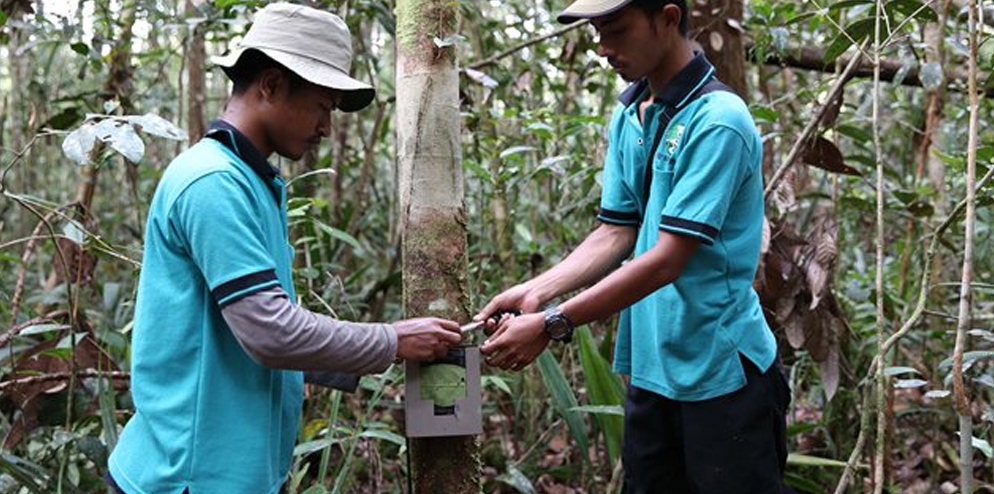Januari 15, 2018
Saat mendengar kabar adanya buaya sepanjang lima meter di dekat, kebanyakan orang akan langsung menghindar. Sidiq Purwanto, 25 tahun, justru menuju area tersebut untuk mencari sang reptil.
Sebagai Asisten Bidang Lingkungan RER, Sidiq bertugas memantau satwa liar di area restorasi ekosistem dan konservasi seluas 150.000 hektare.
Kabar dari warga setempat membawanya melakukan pencarian. “Seorang nelayan melaporkan melihat seekor buaya, dan berdasarkan laporan tersebut kami berencana memasang kamera jebak untuk memantaunya,” ujar Sidiq. Setelah pencarian selama 90 menit dengan perahu, mereka menemukan buaya tersebut, namun kini timbul bagian terberat: mengamati buaya tersebut selama 15 menit untuk menentukan lokasi optimal pemasangan dua kamera jebak di Sungai Serkap yang berada di Kecamatan Teluk Meranti.
“Saya khawatir. Kami tidak punya cukup banyak waktu untuk memasang kameranya, namun akhirnya tetap kami lakukan. Dan, ternyata kamera jebak tersebut berhasil mendapatkan gambar buaya yang bagus,” tukasnya.
Sidiq sudah bekerja di Restorasi Ekosistem Riau (RER) selama dua tahun sebagai Asisten bidang Lingkungan. Ia bertanggung jawab memantau keanekaragaman hayati dan lingkungan hidup di area konsesi RER di Kepulauan Meranti, termasuk memasang kamera jebak. Ia juga bertanggung jawab memantau mutu air di area tersebut.
Bagi Sidiq, yang mulai bekerja setelah ia lulus dari Universitas Gadjah Mada di tahun 2015, pekerjaan yang ia lakukan di RER sangat menantang. “Memantau keanekaragaman hayati di kawasan RER menjadi pengalaman yang luar biasa. Saya pernah menghabiskan waktu dua minggu di tengah belantara untuk memantau satwa liar, mulai dari mamalia hingga burung,” ujarnya. Biasanya, tim pemantau akan berkemah di satu lokasi selama kurang-lebih tiga hari sebelum pindah ke lokasi berikutnya.

Sidiq dan timnya biasa memeriksa hasil rekaman tiap kamera sebulan sekali, meski tiap kamera dilengkapi dengan baterai yang tahan hingga enam bulan, tergantung dari seberapa sering kamera tersebut menjadi aktif karena adanya gerakan di dekatnya.
Ada 350 kamera jebak yang dipasang di tahun 2015, dan 79 kamera lagi di tahun 2017, yang berperan penting dalam penyusunan daftar inventaris satwa liar yang ada di area yang masih belum banyak dijelajahi ini. Sejauh ini RER telah berhasil merekam 220 spesies burung, 107 spesies amfibi dan reptil, serta 70 spesies mamalia, termasuk harimau Sumatra yang langka.
Kamera jebak berperan penting dalam proses ini, memungkinkan pemantauan atas area yang lebih luas. Bagi Sidiq, salah satu hasil yang menggembirakan ialah diperolehnya rekaman kucing tandang (Prionailurus planiceps), satwa yang langka dan terancam punah.
“Belum lama ini kami berhasil mendapat rekaman kucing tandang dari kamera jebak. Satwa ini merupakan satwa ikonis, dan kami ingin melacak mereka,” ungkapnya.